Sensitivities
A. More wildfire and insect outbreaks will increase loss of late-successional forest habitat and connectivity.
B. Loss of habitat structure and spatial heterogeneity will increase species vulnerability to changing climate.
C. Higher temperature and increased disturbance will cause shifts in ranges of plant and animal species.
D. A warmer climate will potentially convert drier forest types (e.g., ponderosa pine) to shrubland or grassland
E. Higher temperatures, loss of snowpack, and vegetation changes may increase stress for some species in cold upland and subalpine forests
F. Decreased streamflow will reduce riparian vegetation and affect food supply and habitat structure for riparian-obligate species.
G. Increased duration and periodicity of drought and reduced soil moisture stress will lead to changes in wetland habitat quantity and quality; higher temperature will alter phenology and species interactions (e.g., predation, competition) of wetland obligate species.
H. Higher wildfire frequency in sagebrush-grass ecosystems will cause increased mortality of shrub species and increase dominance of nonnative species.
I. Higher temperatures will alter wildlife phenology, or timing of life history events (e.g., breeding, dispersal, pelage change).
J. Increasing temperatures may exceed physiological thresholds of some animal species.
K. Altered disturbance regimes, altered water availability and increasing temperatures will likely enhance the spread of nonnative invasive species.
L. Warming temperatures may alter human-use patterns in some habitats (especially low and high elevation), including longer periods of use, altered seasonal-use patterns, and increased concentrations of use in particular habitats, which can affect habitat resilience.
A. Sensitivity: More wildfire and insect outbreaks will increase loss of late-successional forest habitat and connectivity.
Explanation
In a warmer climate, dense forests with high fuel loads will be more susceptible to crown fires and insect damage, which can kill old trees and eliminate multi-level canopy structure, thus reducing habitat for some animal species that need old forests (Chmura et al. 2011, Halofsky et al. 2015).
Practices
Maintain current habitat, restore historical habitat, and promote potential future habitat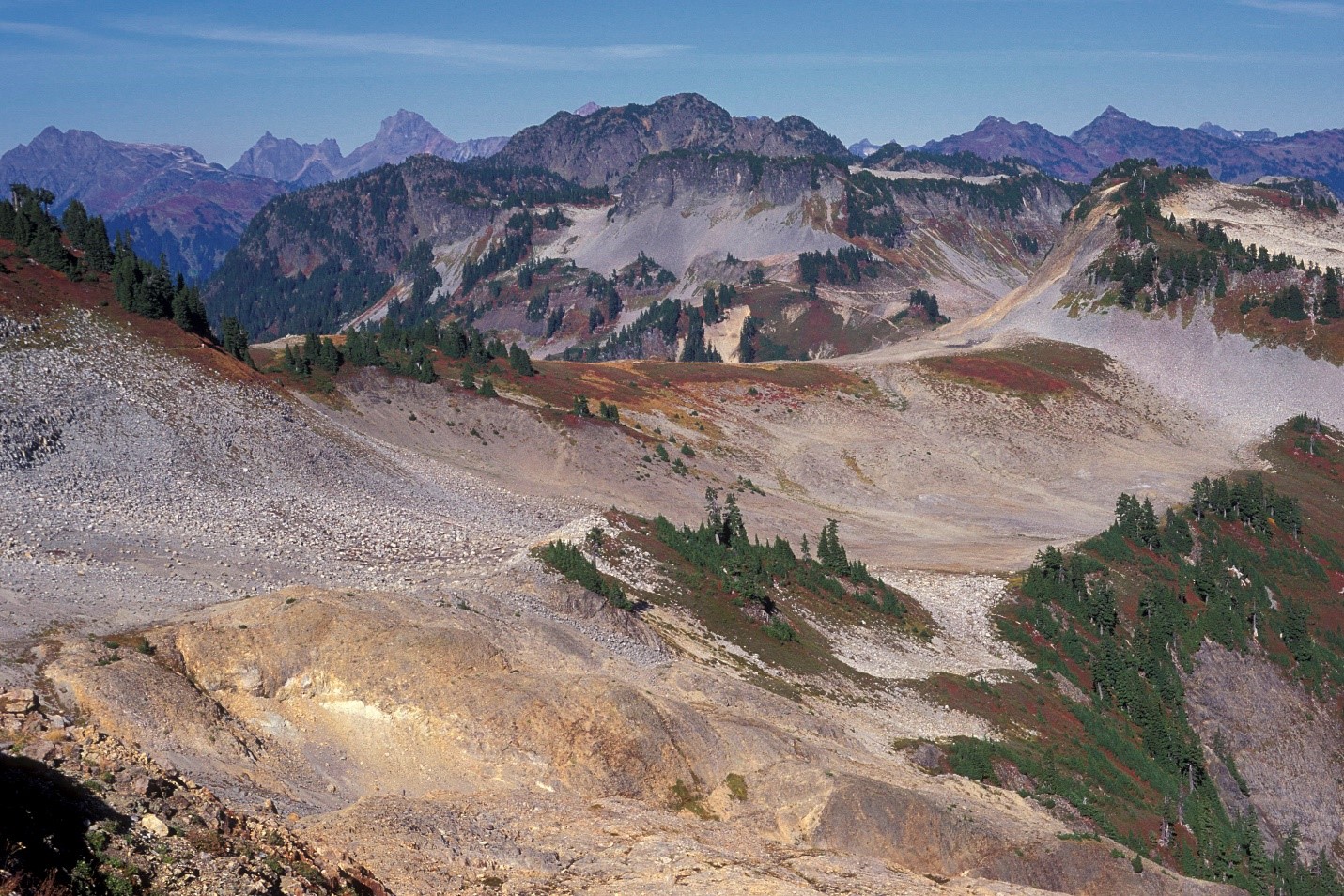
- Conserve current old-growth habitat
- Strategically place fuel breaks to minimize risk to important habitat areas
- Protect, maintain and recruit legacy structures (e.g., large trees, snags, down wood)
- Restore understory to create future habitat
- Identify and protect areas on the landscape that are more likely to maintain late-successional habitat
Increase resilience of late-successional habitat and surrounding habitat
- Increase landscape biodiversity and heterogeneity by modifying species composition
- Increase diversity of age classes and restore a patch mosaic
- Accelerate development of additional late-successional habitat
- Increase protection of critical habitat structure (e.g., snags and nest trees)
- Consider policy changes and/or amendments to existing management plans to allow for adaptive management within late-successional reserves to promote stand resilience
- Increase capacity for monitoring insects to forecast and anticipate outbreaks
- Manage insect outbreaks in early stages or as necessary to reduce damage
- Collaborate with neighbors on priority areas for treatments, and increase extent of protected areas
- In dry forest types, consider thinning and prescribed fire to prevent stand-replacement fire, but prevent loss of old trees by reducing fuels prior to burning (e.g., reduce fine fuels at the base of trees and reduce ladder fuels)
- Maintain spatial patterns that are resilient to disturbance and maintain landscape permeability
Increase monitoring of specialist species that are expected to be sensitive to climate change
- Identify climate refugia
- Adjust monitoring protocols to detect species responses to climate change
- Increase monitoring to determine if population trends are associated with climate change versus other stressors
B. Sensitivity: Loss of habitat structure and spatial heterogeneity will increase species vulnerability to changing climate.
Explanation
If disturbances increase in a warmer climate, forests will tend to be in younger age classes, without as much (vertical and horizontal) structural diversity (Chmura et al. 2011), reducing the number of animal species for which suitable habitat is available.
Practices
Develop prescriptions for stands and large landscapes to maintain heterogeneity
- Maintain high quality early-, mid-, and late-successional habitats
Develop prescriptions to monitor and protect high-value, large, old trees
C. Sensitivity: Higher temperature and increased disturbance will cause shifts in ranges of plant and animal species.
Explanation
If disturbances increase in a warmer climate, plant species composition will shift, thus causing a significant change in habitat availability and connectivity for animal species (Parmesan 2006).
Practices
Increase habitat connectivity and permeability
- Increase, prioritize, and support the purchase and management of land transactions such as acquisitions and easements, especially in critical areas where connectivity may be of concern
- Consider transportation infrastructure management tools (including encumbrances) to address concerns regarding access in critical habitats
- Develop landscape connectivity and permeability patterns for animal movement at multiple scales
D. Sensitivity: A warmer climate will potentially convert drier forest types (e.g., ponderosa pine) to shrubland or grassland.
Explanation
Increased crown fires in dense stands, prolonged droughts, and bark beetles may eliminate some older ponderosa pine stands and make regeneration difficult, allowing other species to become dominant in some locations (Halofsky et al. 2015). This will eliminate habitat for animals that use mature ponderosa pine forest.
Practices
Promote ponderosa pine resilience
- Reduce competition from Douglas-fir and grand fir (thin, burn) in current mature ponderosa pine stands
- Utilize understory burning when possible and during historic burning windows in order to provide for understory forb, grass, shrub, and overstory resilience
- Protect current mature and older ponderosa pine stands
- Plant ponderosa pine where it has become less common within its natural range
Identify sites that will no longer sustain ponderosa pine and promote high-quality grassland and shrubland habitat in those locations
E. Sensitivity: Higher temperatures, loss of snowpack, and vegetation changes may increase stress for some species in cold upland and subalpine forests.
Explanation
A warmer climate may affect the mosaic of forest and meadows in subalpine ecosystems by altering species composition in response to less snow and a longer growing season (Cansler et al. 2016). This would affect animals that require persistent snowpacks and mountain meadows.
Practices
Protect rare and disjunct tree species (e.g., Alaska cedar, limber pine, whitebark pine)
- Plant and encourage regeneration of rare and disjunct species in appropriate locations
- Plant whitebark pine genotypes that are resistant to white pine blister rust
Protect cold upland subalpine forests by restoring forests at lower elevations, thus reducing spread of large crown fires
- Create targeted fuel breaks at strategic landscape locations
- Thin dry forests to densities low enough to reduce fire intensity
Accelerate restoration of cold upland and subalpine forests where appropriate
- Increase the availability of nursery stock and seed for tree species in cold upland and subalpine forests
Increase population resilience of subalpine-dependent species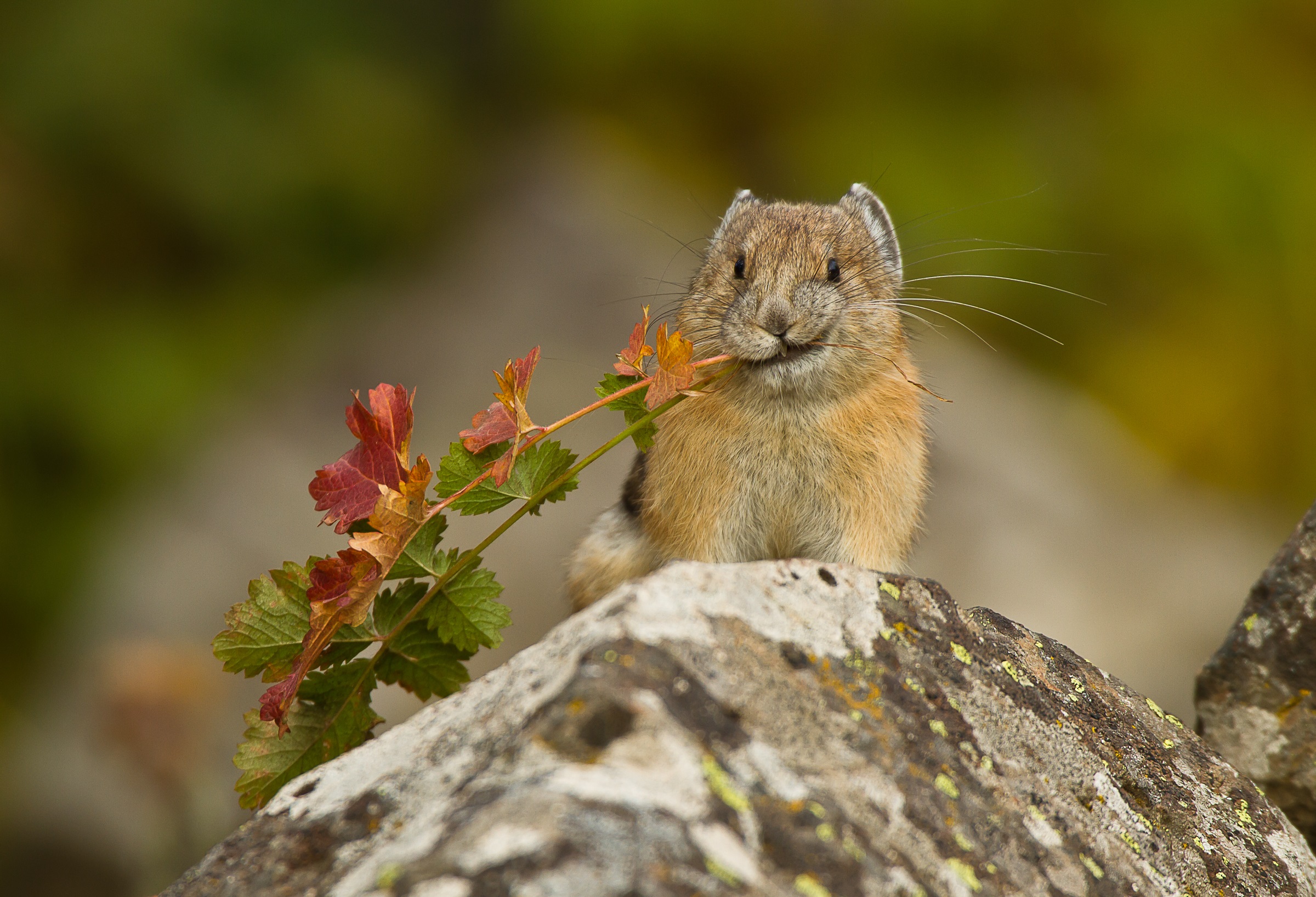
- Increase education and regulatory enforcement to prevent adverse human-wildlife interactions
Maintain and protect summer alpine habitat for species such as pikas and marmots
- Monitor tree establishment in meadows
- Remove trees from meadows using fire and mechanical treatments
- Monitor soil development, cryptobiotic soil crust, and herbaceous plant establishment in previously snow-covered and glaciated areas
- Assess visitor use in alpine and subalpine habitats; incorporate management strategies that may include education, awareness, use designations, and other recreation management tools
Develop mitigation measures and strategies to compensate for loss of snowpack location and duration
- Reduce impacts from winter recreation as ice- and snow-based recreation is concentrated into smaller areas
- Maintain habitat for thermal cover and security
- Utilize methods that retain snowpack and associated moisture (e.g., utilize tree retention to slow the loss of snow and retain snowmelt through meadow and wetland restoration)
F. Sensitivity: Decreased streamflow will reduce riparian vegetation and affect food supply and habitat structure for riparian-obligate species.
Explanation
Riparian habitat is relatively uncommon across most landscapes, but will be disproportionately affected by a warmer climate (Dwire and Mellmann-Brown 2017), quickly altering habitat quality for a large number of animal species that need this habitat for water, food, and cover.
Practices
Reduce riparian impacts by storing more water on the landscape and raising the water table where possible
- Inventory current and potential habitat
- Increase beaver populations with translocation and trapping to create more wetland habitat in strategic locations where they can be most successful
- Plant native riparian vegetation, manage domestic and ungulate grazing, and manage recreational use including special uses in order to restore riparian habitat
- Use snow fences and reflective tarps to retain snow in critical areas where effective and appropriate
G. Sensitivity: Increased duration and periodicity of drought and reduced soil moisture stress will lead to changes in wetland habitat quantity and quality; higher temperature will alter phenology and species interactions (e.g., predation, competition) of wetland obligate species.
Explanation
Wetland habitat is relatively uncommon across most landscapes, but will be disproportionately affected by a warmer climate (Lee et al. 2015), quickly altering habitat quality for a large number of animal species that need this habitat for water, food, and cover.
Practices
Identify, retain, and restore riparian and wetland habitat for wildlife
- Actively maintain and protect functioning wetlands
- Expand or restore habitat where appropriate
- Deepen wetlands to retain water later
- Restore floodplain function
- Increase beaver populations with translocation and trapping to create more wetland habitat in strategic and coordinated areas where they can be the most successful
- Manage grazing, recreation, special uses, and other stressors in sensitive areas to maintain wildlife habitat
- Maintain riparian vegetation to provide wildlife habitat and stream shading
Increase resilience of wetland obligate species by preserving biodiversity
- Identify important habitat manipulations based on monitoring
- Protect critical areas
- Control spread of nonnative species
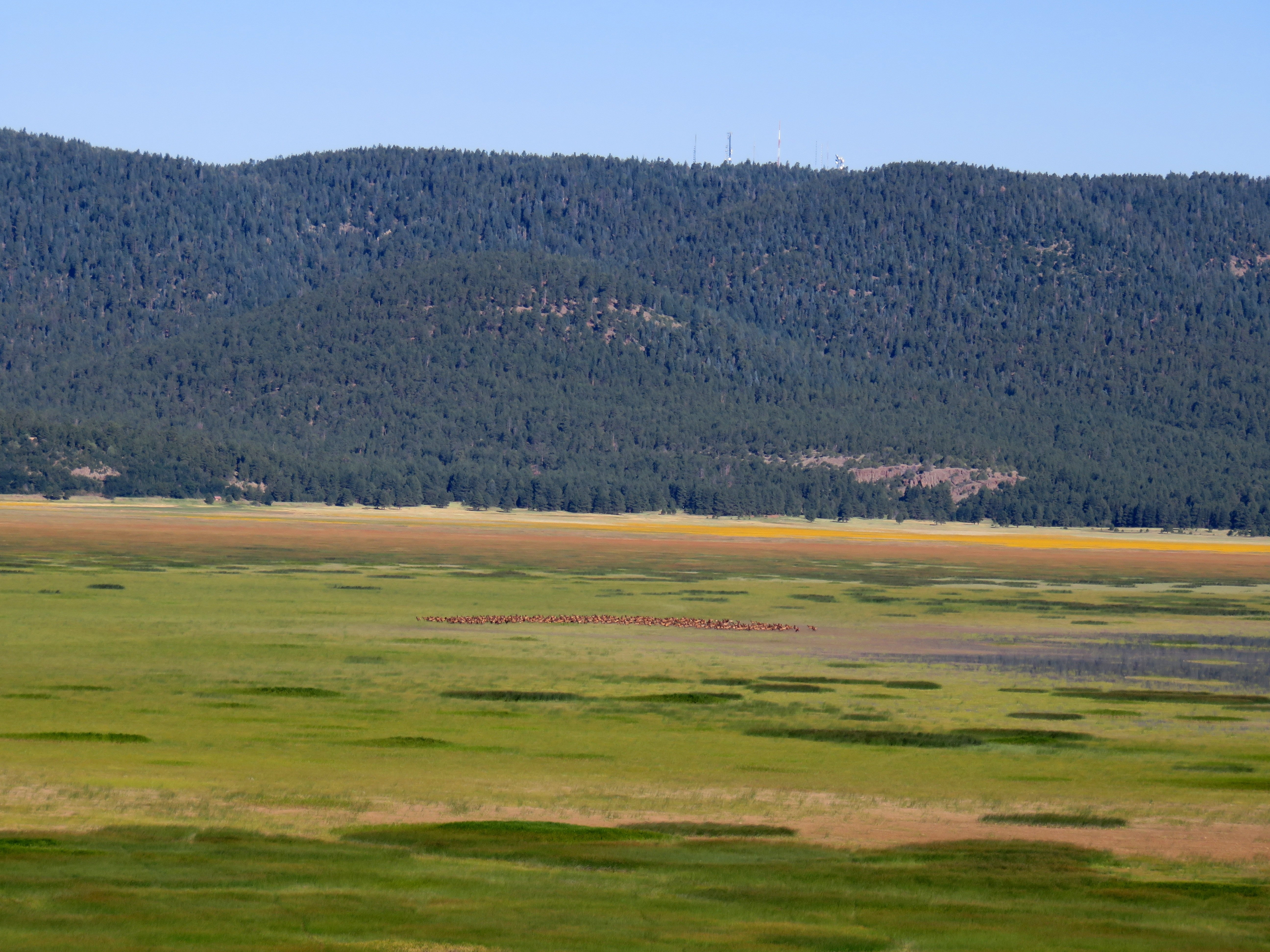
Monitor and prioritize areas that would benefit from wetlands management
- Prioritize areas for active management and protection across jurisdictional boundaries
- Focus monitoring on sensitive habitats and species in priority locations
- Periodically review and revise priorities
Increase population resilience by reducing non-climatic threats
- Manage road, trail, and recreation impacts
- Maintain functional hydrology in critical habitats
- Increase habitat connectivity and heterogeneity
- Control spread of nonnative species
Increase resilience to changes in temperature and hydroperiod by enhancing breeding sites
- Use vegetation to increase shading of wetlands and microhabitats
- Retain water levels in wetlands when controlled by reservoir systems and special use permits
- Increase microhabitat structures (e.g., woody debris) for microclimate refugia, nesting habitat, and egg deposition
H. Sensitivity: Higher wildfire frequency in sagebrush-grass ecosystems will cause increased mortality of shrub species and increase dominance of nonnative species.
Explanation
Increased fire frequency is expected to cause high mortality of large expanses of mature sagebrush (Creutzburg et al. 2015), thus quickly reducing habitat for greater sage-grouse, sage sparrow, and other species, requiring decades for recovery of high-quality sagebrush systems.
Practices
Increase resilience of native sagebrush-grass ecosystems
- Promote the occurrence and growth of early-season native species
- When reviewing and evaluating grazing management plans and policies, promote, monitor, and manage perennial growth and native species structure and diversity
- Manage fire to maintain desired habitat
- Apply prescribed burning during historic burning period; actively monitor to continually support local knowledge base
- Prevent fragmentation of native habitat
Determine most appropriate management strategies to reduce conifer encroachment in mid- and late-successional sagebrush
- Use mechanical means and prescribed fire to reduce conifer encroachment
- Reconsider active management to maintain sagebrush where it is unlikely to persist in the future
Maintain growth of native shrub, grasses and forbs, while minimizing the spread of non-native species
- Remove encroaching conifers
- Plant seed of native species
- Monitor successional patterns of vegetative communities
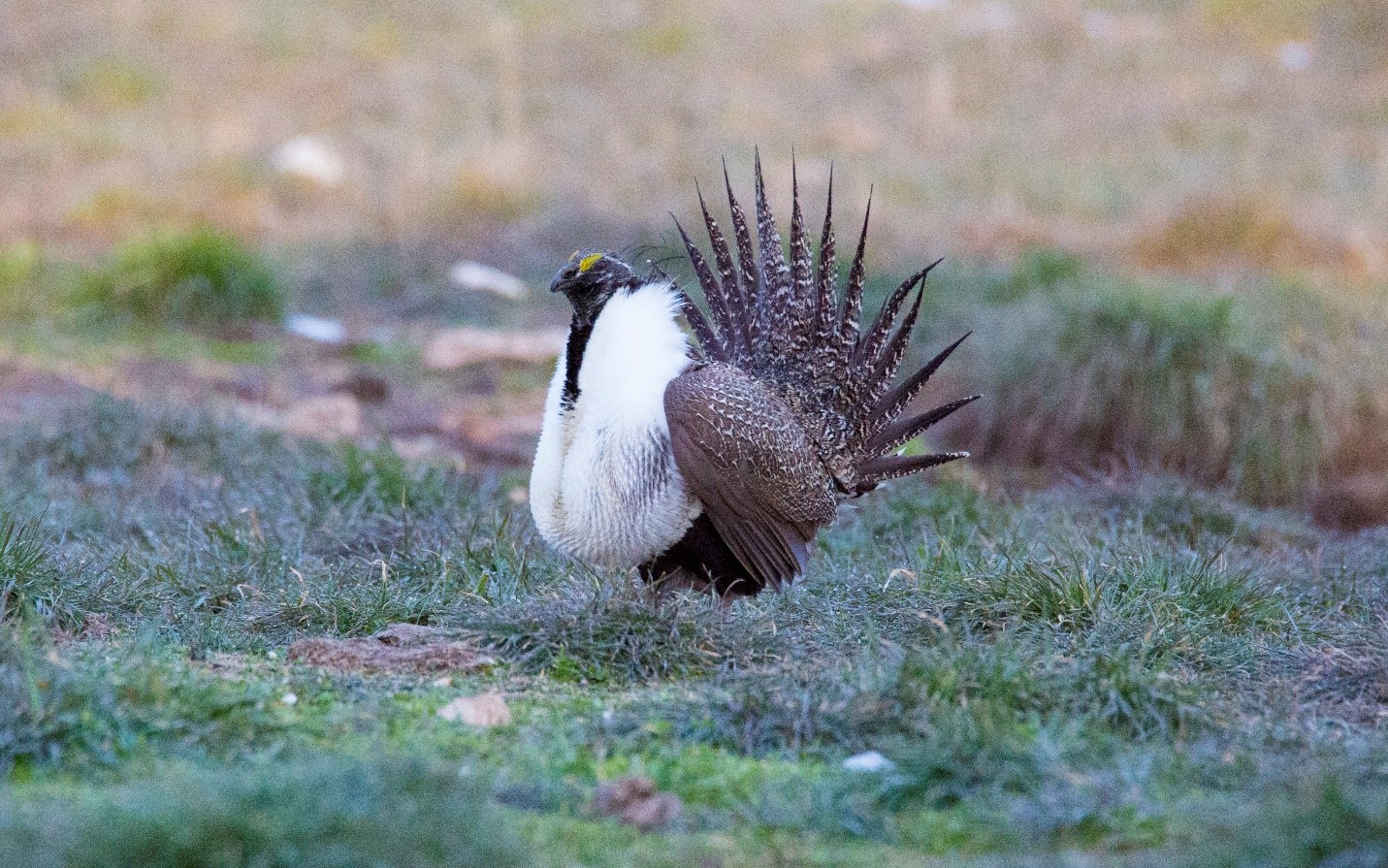
Manage grazing by livestock and native ungulates to reduce negative and cumulative impacts to native grasses, forbs, and shrubs
Manage for soil conditions to avoid increased runoff
- Ensure that vegetative ground cover is as high as possible for local conditions
Reduce disturbances that can result in a habitat type/species conversion
- Reduce fuel continuity to decrease the likelihood of widespread fire
- Use methods that reduce adverse impact of treatments (e.g., invasion by annual grasses following prescribed fire or wildfire)
- Control invasive plants
- Manage motorized and mechanical recreation, grazing, and other stressors
- Maintain and restore a diversity of vegetation types and successional stages across the landscape
I. Sensitivity: Higher temperatures will alter wildlife phenology, or timing of life history events (e.g., breeding, dispersal, pelage change).
Explanation
Mismatches in phenological characteristics between animals and their environment (vegetation, snowpack, etc.) can result in lower fitness for some animal species through altered reproduction, predation, and vigor (Parmesan 2006).
Practices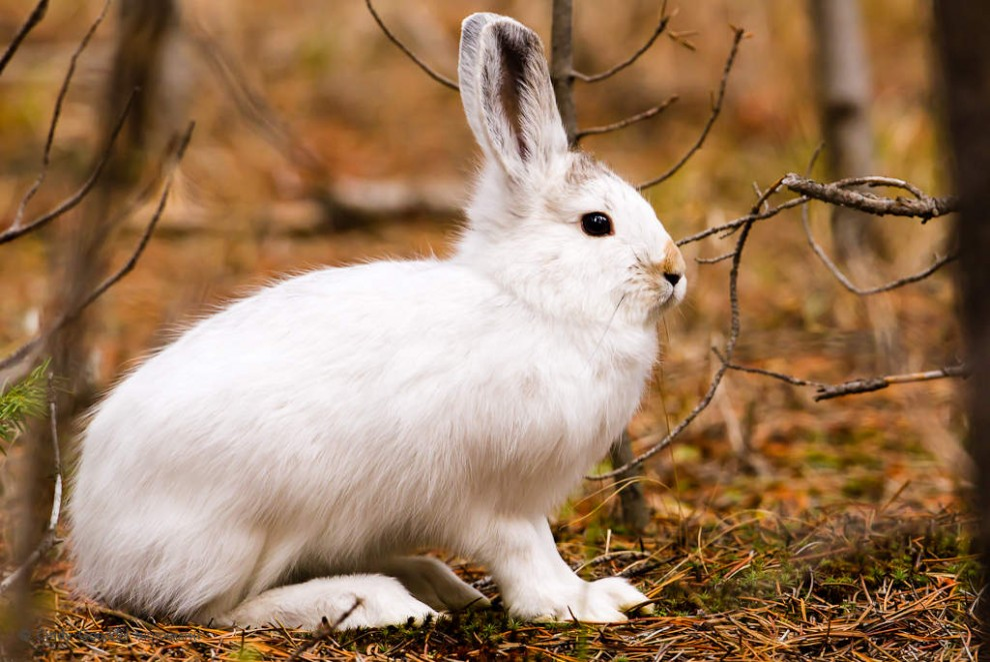
Identify species where phenology mismatches are relevant, and prioritize those areas for protection; protect and restore large enough areas to be relevant to the population.
- Maximize habitat quality and availability so populations are more resilient (potentially helping to minimize impacts of phenology mismatches)
- In areas that remain phenologically matched, prioritize those areas for protection and manage for habitat resilience
- Identify areas that will become matched in the future and maintain and promote connectivity so animals can migrate to new habitats
- Consider assisted migration (managed relocation) where appropriate
J. Sensitivity: Increasing temperatures may exceed physiological thresholds of some animal species.
Explanation
A warmer climate will cause stress in animals with low or narrow ranges of thermal tolerance if adequate habitat to buffer this stress is unavailable, potentially lowering fitness through altered reproduction, predation, and vigor (Root and Hughes 2005).
Practices
Provide thermal refugia and opportunities for movement
- Maintain sufficient habitat for thermal cover and security
- Maintain landscape permeability for animal movement (e.g., provide passage structures across major highways, close roads, maintain elevational connectivity)
K. Sensitivity: Altered disturbance regimes, altered water availability and increasing temperatures will likely enhance the spread of nonnative invasive species.
Explanation
Establishment of nonnative invasive species will likely result in loss and/or alteration of native aquatic and terrestrial habitats (Hellmann et al. 2008).
Practices
Use an integrated approach to prevent the spread and establishment of nonnnative invasive species
- Use early detection/rapid response to treat and restore newly invaded areas to prevent establishment
- Enhance the resistance and resilience of native plant communities by maintaining vigorous growth of native species
- Use integrated pest management to control established infestations, including biological controls, herbicides, and ecological competition
- Increase surveillance for nonnative invasive species (e.g., white nose syndrome, zebra and quagga mussels, avian diseases such as West Nile virus and endoparasites) to identify and control outbreaks
- Conduct public education and outreach to reduce spread of nonnative invasive species
L. Sensitivity: Warming temperatures may alter human-use patterns in some habitats (especially low and high elevation), including longer periods of use, altered seasonal-use patterns, and increased concentrations of use in particular habitats, which can affect habitat resilience.
Explanation
In a warmer climate, recreation and visitor use is expected to increase in areas with cooler temperatures and water, including more and earlier recreation in high-elevation habitats as snow decreases, and more recreation in low-elevation lakes and rivers (Hand and Lawson 2017).
Practices
Improve habitat resilience from increased human pressure
- Address high-elevation snow sports and recreation with travel management, seasonal restrictions, and area designations
- Address increased recreation use within riparian areas, such as dispersed camping and concentrated day use, with strategic, long-term recreation planning
- Address disturbance from extended human use in low- and mid-elevation habitats with travel management, strategic recreation planning, and improving effectiveness of physical barriers for road and trail closures
Introduction Hydrology, Water Uses, and Infrastructure Forest Vegetation Non-Forest Vegetation
Riparian Areas, Wetlands, and Groundwater-Dependent Ecosystems Fish Habitat and Fisheries Wildlife Recreation References
Climate Risk Management Practices prepared by: J.J. Ho; J.E. Halofsky; D.L. Peterson

